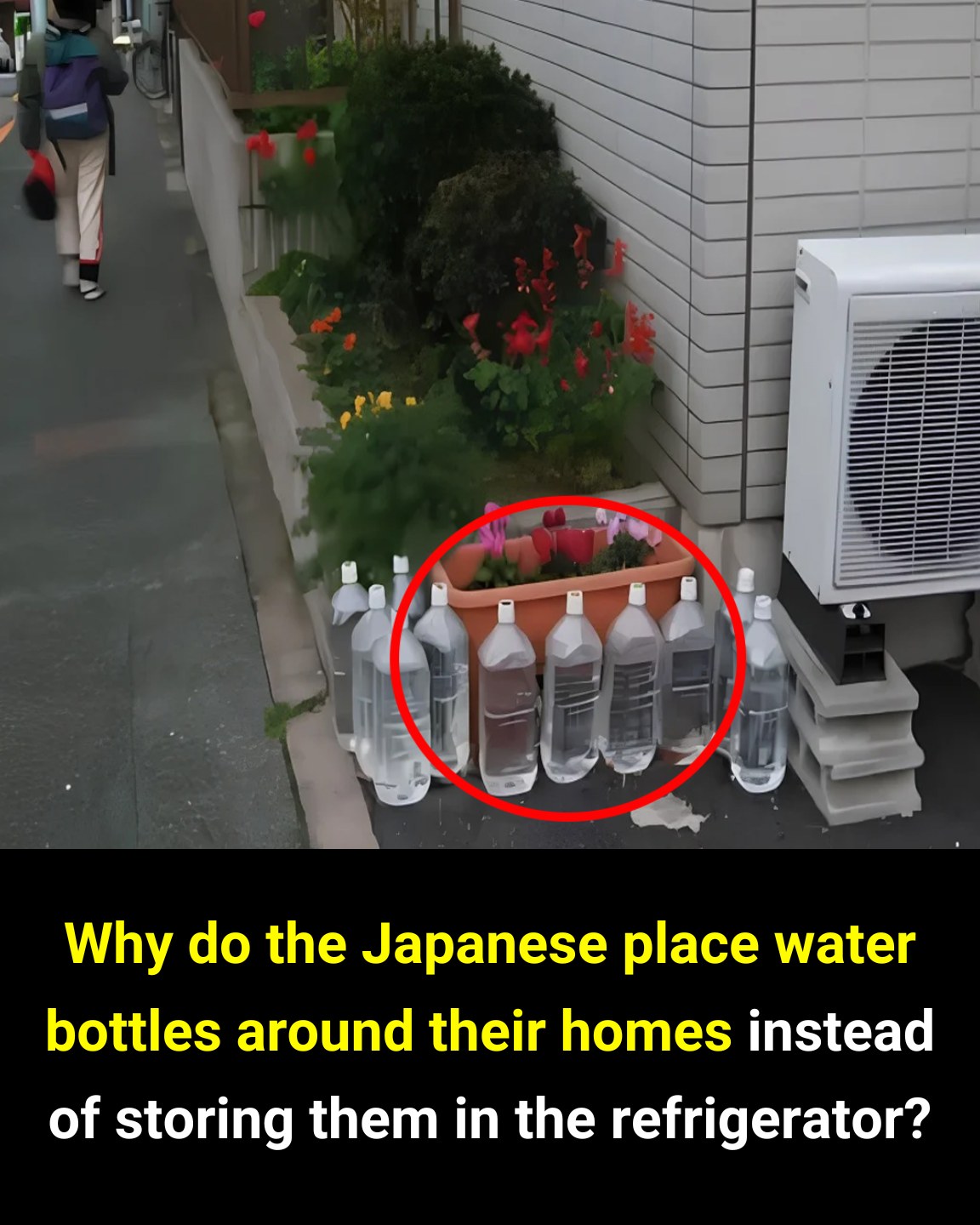If you’ve ever walked through a quiet residential neighborhood in Japan or seen videos of its streets online, you may have noticed something a bit out of the ordinary—clear plastic water bottles carefully arranged along fences, on garden paths, near flower pots, or beside walls. At first glance, it might seem like someone simply forgot to clean up after a picnic or left them behind accidentally, but in reality, these water bottles are placed there on purpose.

This tradition, while strange to outsiders, is known locally as “nekoyoke,” which translates to “cat deterrent.” The purpose behind these bottles isn’t hydration—it’s to keep stray cats away. Japan is famous for its love of cats, with cat cafés, cat-themed attractions, and even entire towns that celebrate feline charm. However, stray cats can pose a problem when they roam freely in urban and suburban areas. They may damage property, scatter trash, use gardens as litter boxes, or even spread diseases. Some people also worry about the risk of cats scratching children or elderly residents. As a result, many households have turned to non-invasive, low-tech solutions like placing water bottles outside their homes to prevent these unwanted feline visitors from causing trouble. What makes this practice even more interesting is the mix of cultural tradition, superstition, and practicality it represents.
These bottles don’t harm the cats in any way, and people who use them believe that they help discourage cats from approaching certain areas. The idea may sound questionable, but the practice continues across generations. So where did this unique habit originate? Interestingly, it didn’t start in Japan. According to sources like Indiatimes, the concept of using water bottles to repel animals likely began in the West, possibly in Europe or the United States during the 1980s. Back then, homeowners would place water bottles on their lawns to keep dogs from urinating on their grass. The trend eventually made its way to Japan, where it was adapted to deter cats rather than dogs, since stray dogs are far less common in Japanese neighborhoods.
Over time, the method became a recognizable part of Japanese street culture. So how do these water bottles supposedly work? Several theories have been passed around to explain why they might scare cats away. One theory suggests that sunlight—or even streetlights at night—shining through the water creates strange flashes or reflections that startle the cats. Another theory is that cats see warped or distorted versions of themselves in the water, which makes them uneasy and causes them to retreat.
@japan Anyone walking around streets in Japan will very quickly notice many plastic bottles filled with water have been placed up against houses and walls, between flower pots, lining fences and walls, tucked into corners and so on. This behaviour was imported from the West and is believed to repel street animals. Known as “nekoyoke” (meaning “cat repellant”) they are one of the distinctive features of the Japanese urban landscape. The trend exploded overseas as far back as the 1980s in Europe and America where it was primarily directed at dogs and bottles are often scattered on lawns, but as street dogs don’t really exist in Japan, here it’s focussed on keeping cats at bay. The idea is that light from the sun (or from streetlamps at night) shines through the water in the bottle and “flashes” the cat, thereby frightening it and causing it to run away. Of course, even if this were true it would be useless on cloudy days or in any shaded position. However as with most superstitions, people conveniently overlook such small details and carry on regardless. “The reason why the water bottles work is because the cats don’t like looking at their distorted reflection” 🎥 by izzanammi (dm us please for credits or removal) #japan #japantips #japaneseculture #japantrip ♬ original sound – Taste of Japan 🇯🇵
Some people even believe that the presence of the bottles confuses the cats’ sense of distance or makes the area seem unfamiliar. While these explanations are creative, none of them have been scientifically proven. In fact, studies and experts in animal behavior generally agree that there’s no solid evidence that water bottles are effective in repelling cats. Especially on cloudy days or in areas with poor lighting, the reflective effect likely doesn’t occur at all. Yet despite this lack of scientific backing, many people in Japan continue the tradition. For some, it’s simply habit. For others, it’s a case of “it might help, so why not try?” Even if it doesn’t work as intended, it causes no harm and doesn’t require any maintenance, making it a harmless and low-effort solution.
In the end, the use of nekoyoke bottles may be more about cultural comfort than proven results. It highlights the Japanese approach to everyday issues—creative, simple, peaceful, and respectful to all living things, even strays. Whether or not it truly keeps cats away, this practice has become a charming and unique aspect of Japan’s residential life. It’s the kind of small, curious detail that adds character to a neighborhood and leaves a lasting impression on visitors. The next time you stroll through a Japanese street and spot these mysterious water bottles, you’ll know they’re not just trash or forgotten items—they’re a gentle, cultural gesture toward solving a very real problem in a very Japanese way.





